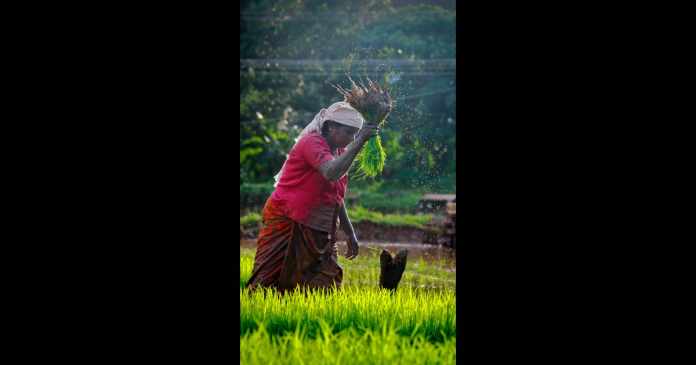Rice farming has been a fundamental part of Indian agriculture for centuries, providing a staple food for billions of people. However, technology has revolutionised how rice grows in India in recent years, from seed selection to irrigation and harvesting. This blog post will explore how technology has changed India’s rice farming landscape.
Table of Contents
Seed Selection
One of the key areas in which technology significantly impacts rice farming in India is seed selection and breeding. Advances in genetic research and biotechnology allow the development of new rice varieties. Such varieties suit the specific growing conditions better in India. With proper tillage of the land using a rotavator, you can plant these seeds to get optimal yield.
For instance, scientists use molecular markers and genomic techniques to identify genes that confer resistance to common pests. These techniques include tolerance to environmental stress such as drought or salinity. This leads to the development of new rice varieties that are more resilient and can withstand these challenges.
Moreover, with the help of precision agriculture techniques like geolocation, farmers can select specific seed varieties. They can choose according to what’s best suited to their specific field conditions, such as soil type, climate and topography. This ensures that farmers are planting the right seed for the right place. This practice can lead to increased yields and better crop quality.
Precision farming
Precision agriculture is another area in which technology is changing India’s rice farming landscape. This approach involves using advanced technologies such as sensors, drones, and GPS. They collect and analyse data about crop growth, soil conditions, and weather patterns. These drones aim to increase efficiency, reduce costs, and improve yields.
One of the main ways precision agriculture works in rice farming is by using sensor-based irrigation systems. These systems use sensors to measure the moisture content of the soil. Also, they adjust the amount of water applied to the crops accordingly. This helps to reduce water waste and improve the efficiency of irrigation.
Additionally, precision agriculture is also being used to improve crop management by providing data about crop growth and development. This information can be used to identify areas of the field that may be suffering from nutrient deficiencies or disease. Such data also allows farmers to take corrective action more quickly.
During times of harvest, a thresher can also come in handy to separate grains from the chaff.
Use of Drones
Drones and other technology are increasingly becoming prevalent for crop monitoring and management in rice farming in India. These tools allow farmers to survey large areas of land quickly and accurately, providing them with detailed information about crop health, growth, and yields.
One of the main benefits of using drones in rice farming is their ability to cover a lot of land relatively quickly. This allows farmers to survey their fields, including areas that are difficult to access on foot, such as wetlands or hilly terrain.
Additionally, drones can be equipped with cameras and sensors that can detect different types of plant stress, such as pest infestations or nutrient deficiencies. This allows farmers to identify problem areas and take corrective action more quickly.
Government Policies
The government of India plays an important role in promoting and supporting technology adoption in rice farming.
One of the main ways in which government policies promote technology adoption is through investment in research and development. By providing funding for research in areas such as seed selection and breeding, precision agriculture, and crop monitoring and management, the government is helping to ensure that farmers have access to the latest technologies and techniques.
Furthermore, the government is also providing subsidies and incentives to farmers who adopt technology in their farming practices. This includes financial assistance for purchasing equipment such as sensors, drones, and precision agriculture tools.
Moreover, the government is also promoting the use of hybrid seeds, which are more productive and resistant to diseases, pests and climatic stress. This has led to an increase in the adoption of hybrid seeds among farmers, which has resulted in a significant increase in productivity and income.
Potential Challenges
The potential challenges and future of rice farming technology in India is a complex issue.
One of India’s main challenges facing rice farming technology is the need for greater access to credit and financing. Many farmers lack the financial resources to invest in advanced technologies and equipment, which can limit the adoption of technology in rice farming.
Another challenge is the lack of technical know-how and training among farmers. Many farmers may be unfamiliar with the latest technologies and techniques and may not know how to use and maintain equipment properly.
Additionally, there is a need for greater investment in infrastructure and logistics. This includes building better roads and transportation networks to connect farmers to markets, as well as upgrading rural electrification and internet connectivity.
Conclusion
Despite these challenges, India’s future of rice farming technology is promising. With the right policies and investments in place, technology can play an important role in increasing yields, improving efficiency, and ensuring food security for the country’s population. With the right support and resources, farmers can continue to adopt technology and improve their livelihoods.
In conclusion, India’s future of rice farming technology is closely tied to the country’s ability to address the challenges of access to finance, technical know-how, and infrastructure. By investing in these areas, the government and other stakeholders can help ensure that farmers have the necessary resources to adopt technology and improve their livelihoods.












